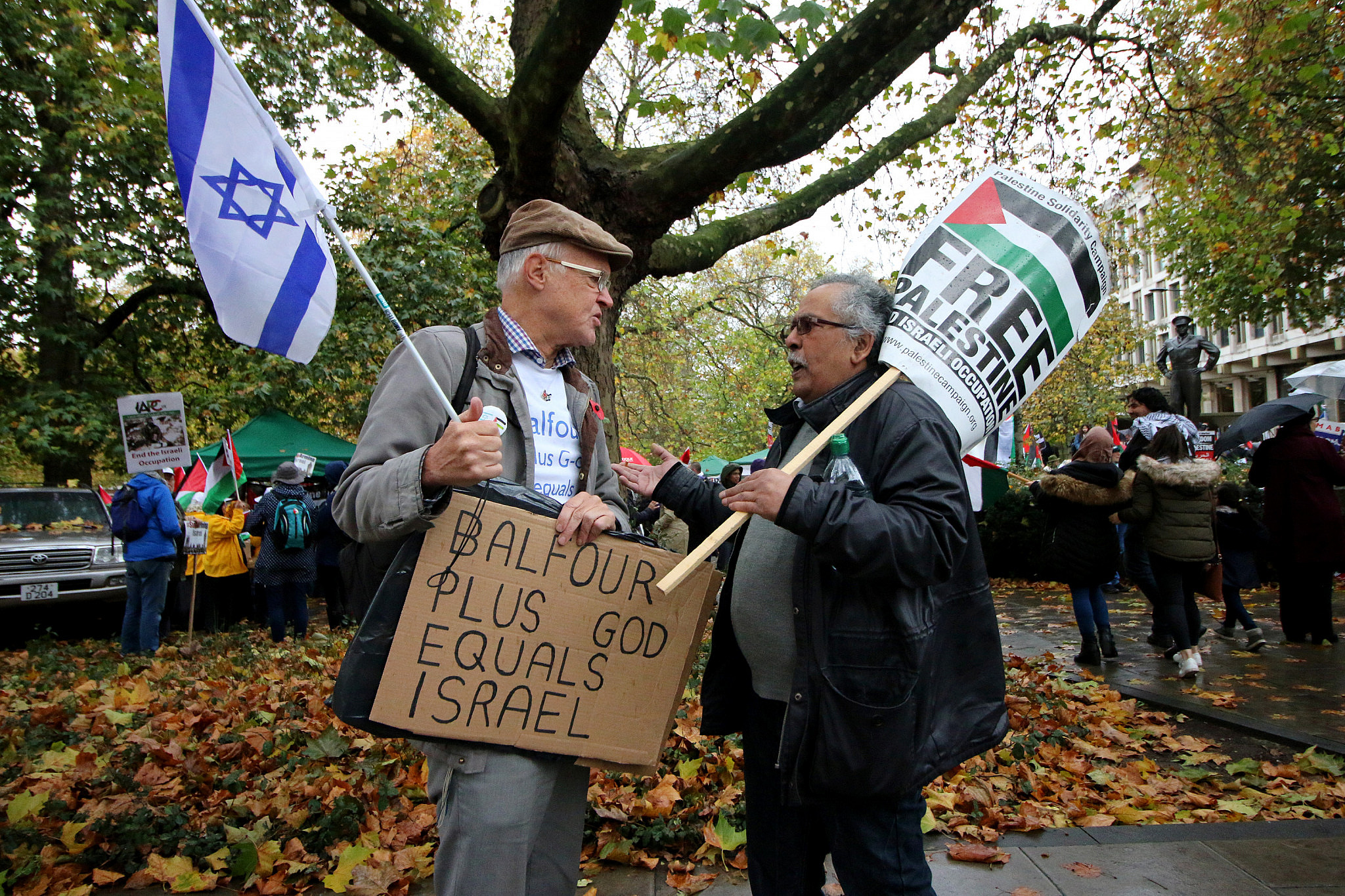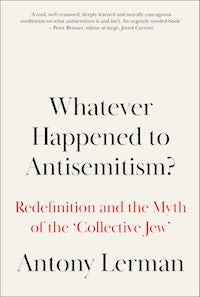“Whatever Happened to Antisemitism?: Redefinition and the Myth of the ‘Collective Jew,’” by Antony Lerman, Pluto Press, June 2022, pp. 336.
We are living through a particularly troubling moment in the global struggle against antisemitism. Amid resurgent right-wing authoritarianism, antisemitic conspiracy theories are being deployed as the basis of electoral campaigns all over the world; violent attacks on Jews in Europe show no signs of decreasing, going hand-in-hand with attacks on other minoritized communities; and in the United States, the masks continue to fall from white nationalist politicians, while public figures with enormous platforms profess their support for Nazism.
Yet, all the while, public understanding of what constitutes antisemitism is more muddied than ever. Accusations of antisemitism are regularly rolled out to silence critics of Israel — very often by Israel itself — and to attack any form of Palestine advocacy as being solely motivated by anti-Jewish racism. In the U.K., this politicization of antisemitism, manifesting in large part as a battle of definitions, has reduced the once intellectually rigorous pursuit of understanding how antisemitism manifests to a political football and tedious identity politics.
It is against this backdrop that we must examine British writer Antony Lerman’s new book, “Whatever Happened to Antisemitism?” Offering a historical and analytical exploration of attempts to redefine antisemitism in the modern context, the book focuses in particular on the development in recent decades of the concept of “new antisemitism” — a politicized approach that aims to conflate criticism of Israel and Zionism with previous understandings of antisemitism, which sought to distinguish between the two.
Lerman’s account is comprehensive and forensic. The book begins with a recap of the major events relating to the Labour Party’s antisemitism imbroglio throughout the period in which Jeremy Corbyn was its leader (2015-20): the confusion over definitions of antisemitism, and the “use and abuse” of the notion of antisemitic tropes. While readers may be hesitant to immerse themselves once again in the various pressure points of that political moment — from the launch event for the Chakrabarti Report on antisemitism, which the Jewish former Labour MP Ruth Smeeth left in tears, to Corbyn’s comment that British Zionists “don’t understand English irony” — it speaks to the astuteness of Lerman’s analysis that he positions what came to be known as the “Labour antisemitism crisis” within the right’s broader, international strategy of redefining antisemitism to serve its own political agenda, rather than embarking on a stand-alone re-litigation of well-trodden ground.
The book then moves into a historical retelling of the construction of the “new antisemitism” by Zionist organizations and successive Israeli governments. This came largely in response to the shifting political climate following the start of the Israeli occupation in 1967, and in particular the now-famous United Nations Resolution 3379, passed in November 1975 and since revoked, which declared that “Zionism is a form of racism and racial discrimination.” As Lerman argues, the move symbolized an increasing hostility toward Israel on the international stage, which compelled the Israeli government and Zionist academics to formulate a new strategy to shore up the state’s legitimacy.
Their solution was to seek to demonstrate how criticism of Israel is, in fact, an attack on Jewish people all over the world, by arguing that the state represents the “collective Jew” in the family of nations. Proponents of this “new antisemitism,” Lerman explains, suggested that “the right to establish and maintain an independent national sovereign state is the prerogative of all nations, so long as they happen not to be Jewish.”
Lerman is quick to point out that Israel’s intervention into attempts previously led by Jewish organizations around the world to address antisemitism in their own countries did not give much regard to the safety of Jews living in those countries; the example of Israel selling arms to the Argentinian military junta that disappeared 20,000 political dissidents in the late 1970s and early ’80s — 2,000 of them Jewish — makes this abundantly clear.
Enshrining criticism of Israel as antisemitism
Against this backdrop, Lerman takes aim at the development of the myriad of organizations, institutions, and nonprofits devoted to identifying and responding to contemporary antisemitism that have adopted the premise of “new antisemitism” and incorporated it into their advocacy and educational efforts. These bodies, he argues, have made a fortified attempt, often in partnership with the Israeli government or affiliated institutions, to redefine how anti-Jewish bigotry is understood on a political and sociocultural level, working to firmly enshrine criticism of Israel or Zionism as a modern version of a classic hatred.
This was and continues to be a clearly internationalist project, with groups like the Anti-Defamation League and the American Jewish Committee in the United States, the World Jewish Congress (previously based in Geneva, now New York) and the Community Security Trust in the U.K. convening and developing resources and analyses of antisemitism that pushed for the recognition of “new antisemitism.” Other organizations, such as the Britain Israel Communications and Research Centre and the Canadian Institute for the Study of Antisemitism, were established in the wake of the Second Intifada and were, according to Lerman, “focusing on ‘new antisemitism’ and ‘antisemitic anti-Zionism.’”
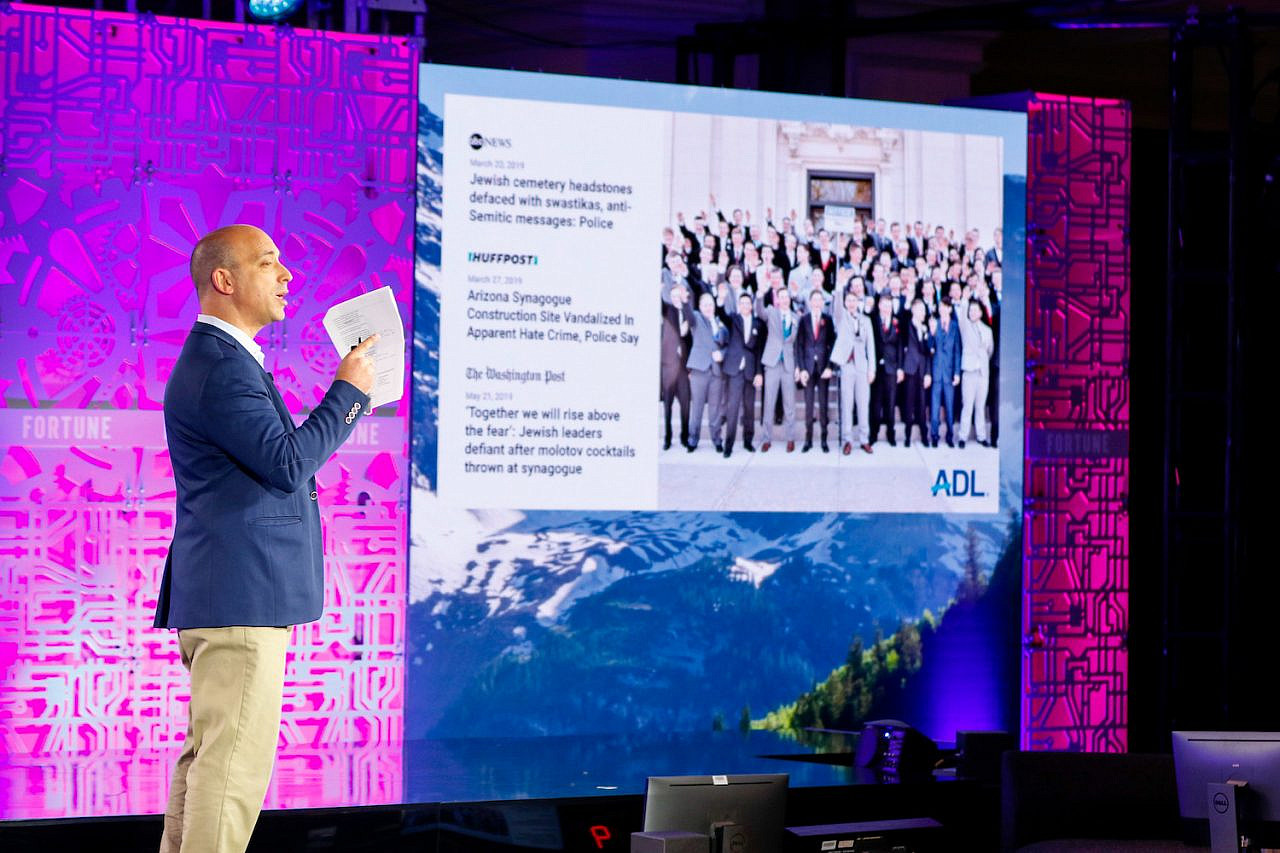
While understanding the interconnected nature of these issues is important, Lerman gets into the weeds with an exceedingly dense amount of information about the inter-quarrelling of the various historical Jewish groups — which risks overemphasizing the impact of conversations that may not have resonated beyond their realm of intracommunal policy or discourse. It could also be argued that, at times, Lerman leans too much into the idea that British-Jewish organizations have little interest in the well-being and safety of the communities they serve, and are purely motivated by their relationship with Israel; it is perhaps more fair to suggest that their desire to support Israel and uphold Zionism as a crucial pillar of British-Jewish identity took priority over material threats to communities living in the U.K.
Nonetheless, the level of detail in this section of the book highlights the extensive efforts by Israeli academic institutions and arms of the government — such as the recently revived Strategic Affairs Ministry, responsible for Israel’s international campaign against the BDS movement — to shift attention away from antisemitism that primarily affects Jewish communities outside of Israel, in favor of focusing on the supposed danger that the delegitimization of Israel poses to global Jewry. Lerman does not understate the impact of this endeavor, and the considerable resources that Israel has poured into it: not only has it generated public confusion as to what antisemitism is, but it has also served to shrink the public conversation regarding how to understand it and, more importantly, how to address it when it arises.
The suggestion that the struggle against antisemitism has, since the late 20th century, become enmeshed in and subordinated to the interests of Zionism, such that competing understandings of antisemitism pit the safety and well-being of Jews around the world against the strength of a nation-state, is jarring. But, as Lerman shows, these are the inevitable consequences of antisemitism’s politicization.
We have seen this competition play out more starkly since the turn of the century: from Prime Minister Benjamin Netanyahu routinely claiming to speak for all Jewish people while aligning with some of the world’s most antisemitic leaders; to former PM Naftali Bennett exploiting the horrors of the Pittsburgh synagogue shooting to justify Israeli aggression against Palestinians in Gaza; to Yair Lapid lambasting Amnesty International’s meticulously evidenced report on Israeli apartheid as antisemitic. Interventions such as these by Israeli leaders have further fuelled the confusion and skepticism about antisemitism as a genuine phenomenon, while pulling attention and resources away from actual antisemitism happening worldwide. By putting the interests of its national project over the interests of Jews around the world, Lerman shows how Israel’s attempts to redefine antisemitism to suit its political aims is actively making Jews less safe.

IHRA: The new gold standard on antisemitism
In recent years, the war over definitions of antisemitism has brought this issue into the center of public debate. The development of the European Union Monitoring Centre on Racism and Xenophobia working definition in the early 2000s, which later morphed into the International Holocaust Remembrance Alliance (IHRA) working definition, was an attempt to generate a unifying definition of antisemitism, but in doing so included various criticisms of Israel as examples of such anti-Jewish sentiment.
The IHRA definition has been marketed as the gold standard on antisemitism, allowing its proponents to discredit and dismiss any alternative understandings of how antisemitism operates. The success of pro-IHRA advocacy is obvious in the British context: almost every major political party in the U.K. has adopted it, alongside numerous higher education institutions and even sports organizations like the Football Association. Yet the IHRA definition has been absent from responses to high-profile antisemitic incidents in U.K. public life, such as the dismissal of former Bristol University academic David Miller. With this in mind, Lerman wants us to understand not only the futility of attempting to create a universally accepted definition of antisemitism, but that the attempts by IHRA’s proponents to expand the understanding of anti-Jewish racism to include criticism of Israel or of Zionism actually leaves Jews more vulnerable.
Over the past couple of years, groups of scholars have attempted to combat the influence of IHRA by producing alternative definitions of antisemitism that do not see anti-Zionism as necessarily equating to antisemitism, including the Nexus Definition and the Jerusalem Declaration on Antisemitism (JDA). For Lerman, however, these have failed to present a “decisive challenge” to IHRA, precisely because such initiatives are seen as a political endeavor rather than an academic one.
In this context, Lerman traces how parts of the academy dedicated to the study of Jews, antisemitism, and racism have at times been willing recruits in the battle to defend Zionism and shield Israel from critique. “I do not exempt the academic study of contemporary antisemitism from being afflicted by and contributing to the state of confusion around understandings of antisemitism … and reducing all criticism of Israel to antisemitic anti-Zionism,” he writes. The impact of this development has been two-fold.
Firstly, it is increasingly obvious, particularly in the British context, how the cloak of scholarship is used to legitimize the political motivations behind pushing the IHRA definition. Indeed, developments since the publication of “Whatever Happened” have further exemplified the intentions of those insisting, through academic scholarship, that anti-Zionism is antisemitism.
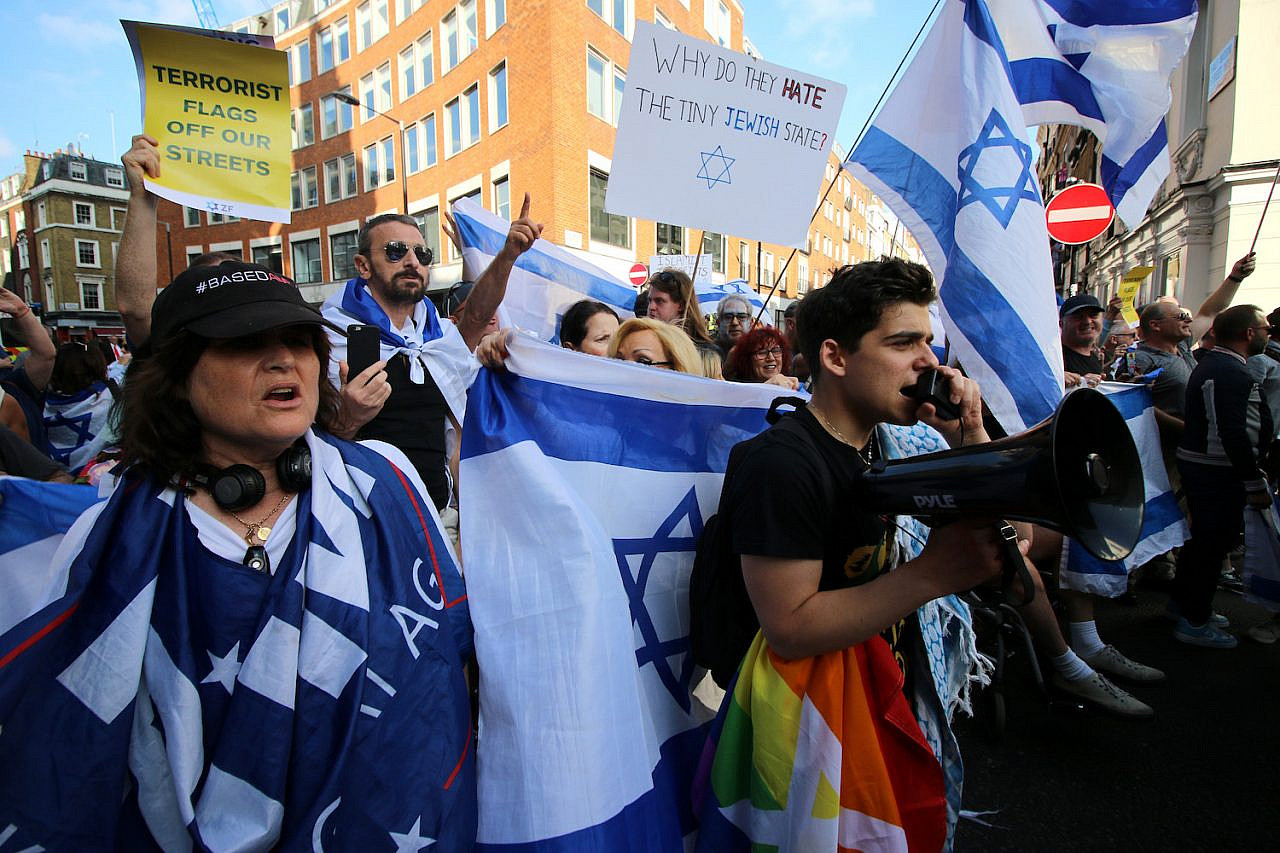
The establishment in late 2022 of the London Centre for the Study of Contemporary Antisemitism (LCSCA) illustrates Lerman’s point. On its website, the LCSCA declares its mission “[t]o challenge the intellectual underpinnings of antisemitism in public life and to confront the hostile environment for Jews in universities.” Yet a closer look reveals what underpins this mission, as the organization explicitly defines anti-Zionism as “an anti-Jewish ideology.” Beyond providing academic credentials to the pursuit of redefining antisemitism to include criticism of Israel, initiatives like these also promote the notion that antisemitism is an ideology rooted in left-wing politics (many of the speakers invited to LCSCA’s launch event, which was postponed after the death of Queen Elizabeth II, were staunch critics of Corbyn’s Labour Party).
These wide-ranging efforts to politicize antisemitism in British public discourse have had significant consequences. Lerman focuses on the treatment of left-wing Jews in the Labour Party since Keir Starmer replaced Corbyn — some of whom have been expelled for their support for Labour figures accused of antisemitism — and cites them as the main targets of this strategy in the U.K. But these efforts go beyond Labour factionalism. Esteemed antisemitism scholars who do not subscribe to the politics of the “new antisemitism,” such as Professor David Feldman, director of the London-based Birkbeck Institute for the Study of Antisemitism, have been widely attacked by the British-Jewish establishment for criticizing the IHRA definition and the strategy it spearheads, and pointing out how it undermines our understanding of and ability to address antisemitism. (Feldman is a signatory to the JDA.)
Similarly, advocates of the IHRA definition have taken aim at academics whose work relates to Palestine, attempting to further shrink the parameters of legitimate academic discourse. In late 2021, Somdeep Sen, the author of several books on Palestinian politics, pulled out of a speaking engagement at Glasgow University, having been ordered to disclose his lecture materials in advance and warned about violating national anti-terror laws, after the university’s Jewish Society raised concerns about his invitation. And last year, U.K.-based Palestinian academic Shahd Abusalama was suspended from her lecturer position at Sheffield Hallam University after social media posts surfaced in which she defended a student who had made a sign saying “Stop the Palestinian Holocaust” — which, according to her employer, violated IHRA.
As Lerman attests, these crackdowns on speech critical of Israel in academia are possible thanks to the IHRA definition’s ambiguity on identifying antisemitism, ultimately creating a chilling effect. In fact, the ambiguity is the point, predicated on the desire of most reasonable people not to be perceived as antisemitic. This lack of precision is what makes the IHRA definition so effective not only at generating confusion around what antisemitism is, but also at diverting the conversation away from the harm that Israel perpetrates against Palestinians on a daily basis. The decision by London’s Tower Hamlets Council to cancel “The Great Bike Ride for Palestine” in 2019, out of fear of being seen as antisemitic, is one such example.
The second impact Lerman identifies speaks more to how the politicization of antisemitism diminishes and erases the lived experiences of many Jewish people, including those who have actually experienced antisemitism. Expanding the definition of what constitutes antisemitism risks undermining it, ultimately rendering these attempts pointless. Quoting the British-Jewish philosopher Brian Klug, Lerman argues: “if everything is antisemitism then nothing is antisemitism.”
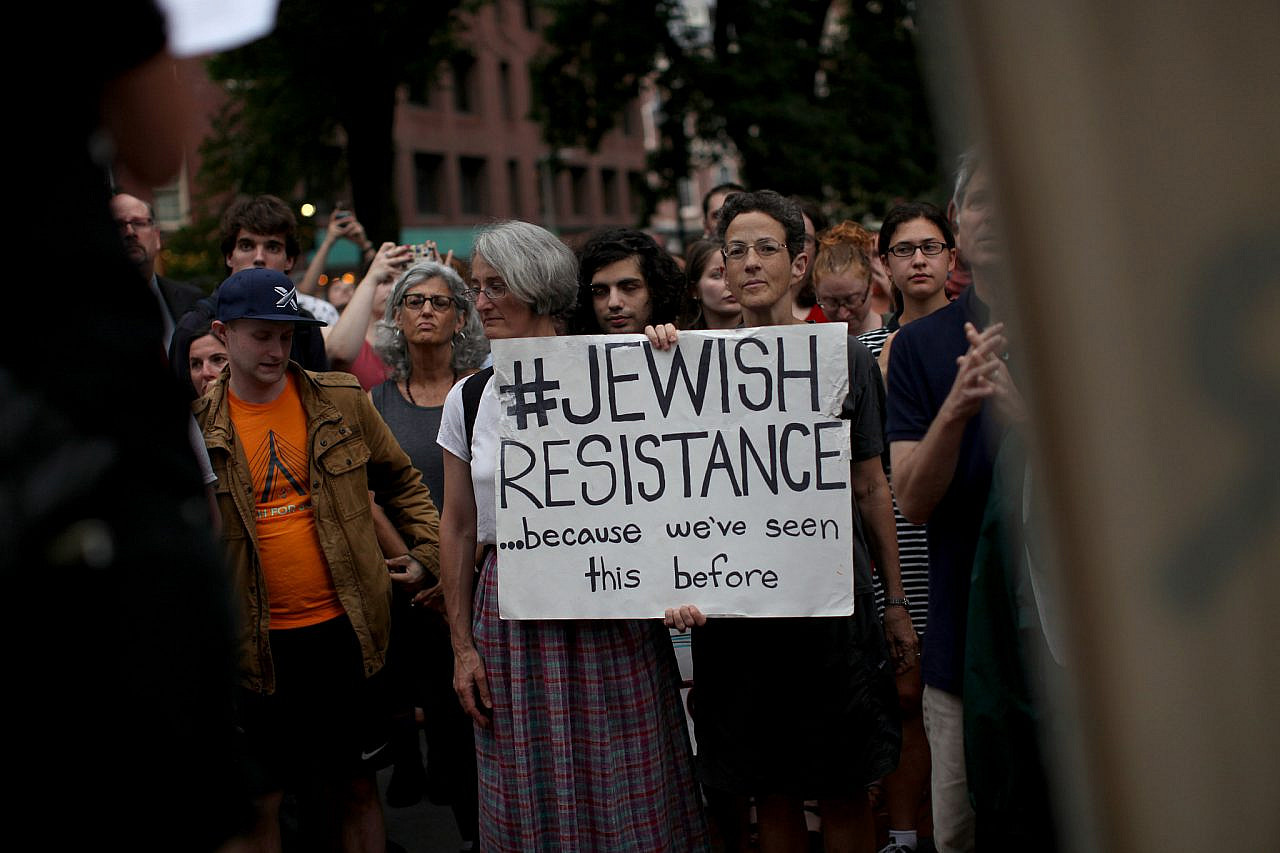
Lerman is at his strongest in his chapter on the myth of the “collective Jew,” which breaks down how the attempt to portray Israel as the Jew among the family of nations has ultimately undermined the struggle to dismantle actual antisemitism. He charges that this distorting of antisemitism in order to allow Israel to act with impunity has come not only (and most pertinently) at the expense of Palestinians’ human rights and freedoms, but also at the expense of the safety and well-being of Jewish people around the world.
Lerman’s assertions are visceral and quietly caustic. Breaking down this process ultimately lays bare the almost comic absurdity of the current political climate, and how the cynical instrumentalization of antisemitism by Israel and its hasbara industry means that Jewish safety has taken a back seat to the desire to affirm a project of ethno-supremacy between the River Jordan and the Mediterranean Sea. Perhaps this book’s most valuable takeaway for progressive activists is its study of how nationalism makes us all less safe, giving a vociferous nod to the importance of protecting universalist values and uplifting collective solidarity in the face of exceptionalism and hyper-nationalism.
Pushing back
The problem Lerman identifies in “Whatever Happened” is enormous, to the extent that it can feel insurmountable. The dissemination of the concept of “new antisemitism” is sophisticated and well-resourced. It is understandable that when it comes to attempts to challenge the conflation of Israel and Jews — and antisemitism and anti-Zionism — Lerman is disappointed, such as where he describes the seedlings of Jewish resistance following Operation Cast Lead, Israel’s assault on Gaza in 2008-2009, as “short lived.” Although Lerman understands the urgency and necessity of pushing back against these trends, he clearly remains skeptical of our collective ability to do so. But the obstacles to liberation struggles have almost always been perceived as insurmountable, until they weren’t.
While Lerman may not see it as his job to offer a vision of what could be, his book is also an intervention against the status quo — even if, by the standards he describes, a small one. Now, there is an opportunity to assess the evidence Lerman presents and invite those working to combat the notion of “new antisemitism” to come together and identify further points on which to push back.
The core value of this book to our understanding of the political debates of our time, then, is how it demonstrates not only that the development of the “new antisemitism” project is essentially a political pursuit, rather than an academic one, but also that Israel, its acolytes, and other right-wing political figures have exploited the fears of Jewish communities around the world to muddy the waters of the vital task of dismantling antisemitism, in order to serve their own political agenda. “Whatever Happened” provides invaluable history and context for those seeking to make sense of how the battle over definitions of antisemitism has been core to a process of attempting to bind Jewish identity to a nationalist project — both among Jews and across wider society.

